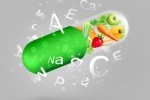Home › Forum › Ask a Nutritionist › Is the medifast diet safe?
This topic contains 2 replies, has 2 voices, and was last updated by ![]() Chelsey B. 11 years, 5 months ago.
Chelsey B. 11 years, 5 months ago.
-
AuthorPosts
-
February 6, 2014 at 1:26 pm #2026
Is the Medifast diet a safe diet: what are the benefits/drawbacks of the diet?
February 7, 2014 at 4:23 pm #2034The Medifast diet is based on a 5 in 1 meal plan. This plan includes 6 meals per day, five of which are low-calorie meal replacements provided by Medifast. The other meal is referred to as the “lean and green meal” and is prepared by the individual. The lean and green meal consists of five to seven ounces of lean protein, three servings of vegetables, and no more than two servings of healthy fats (1). The meal replacements provided contain an average of 100 calories per meal. A meal containing five to seven ounces of protein and three servings of vegetables would most likely provide around 200 to 300 calories depending on the vegetables selected and fat content. In addition to meals, the 5 in 1 plan allows for three condiments, and one additional snack such as celery, sugar-free gum, or ½ oz. of nuts. In all, this diet provides around 800 – 1000 calories per day (2).
In comparing the Medifast 5 in 1 meal plan to a food-based diet of equal caloric intake, it was found that initial weight loss was greater in the Medifast group. However, the Medifast group regained more weight than did the food-based diet group during the bodyweight maintenance phase. Overall, the Medifast group lost an average of 7.8% of their total body weight and the food-based diet lost an average of 5.9% (2).
One area of concern with the Medifast diet is the complete restriction of fruit and dairy intake and the possible resulting health consequences. The USDA recommends 3 cups of dairy and 2 cups of fruit per day to achieve a healthy lifestyle (3). Dairy products provide excellent sources of calcium, potassium and magnesium and contribute largely to bone health (4). Fruit consumption has been shown to protect against the development of coronary heart disease and other serious illnesses (5). Although the Medifast 5 in 1 diet leads to effective weight loss, it may not be the best option for creating an overall healthy lifestyle.
Benefits of the diet include a low level of meal planning and cooking, as well as a number of support centers located throughout the U.S.
Drawbacks of the diet include a high restriction of calories and complete restriction of fruit, dairy, and starches. Long-term adherence may be difficult due to a finite number of meal replacements offered by Medifast. In addition, long-term restriction of calories to this level may not be ideal, especially for active individuals.
In conclusion, the Medifast diet may increase certain health risks due to the complete restriction of fruit, dairy, and other starches that provide important nutrients.
References
1) 5 in 1 Meal Plan: Quick Start Guide. Medifast Web site. Available at: http://www.medifastmedia.com/med/docs/quick_start_guide.pdf. Accessed on February 7, 2014.2) Davis LM, Coleman C, Kiel J, Rampolla J, Hutchisen T, Ford L, Anderson WS, Hanlon-Mitola A. Efficacy of a meal replacement diet plan compared to a food-based diet plan after a period of weight loss and weight maintenance: a randomized controlled trial. NUTR J. 2010;9:11. Available at: http://www.biomedcentral.com/content/pdf/1475-2891-9-11.pdf. Accessed February 7, 2014.
3) Choose My Plate. United States Department of Agriculture Web site. Available at: http://www.choosemyplate.gov/food-groups/dairy-why.html. Accessed on February 7, 2014.
4) Caroli A, Poli A, Ricotta D, Banfi G, Cocchi D. Dairy intake and bone health: A viewpoint from the state of the art. J DAIRY SCI. 2011;94:11:5249-4262. Available at: http://www.sciencedirect.com/science/article/pii/S0022030211005522. Accessed on February 7, 2014.
5) Bhupathiraju SN, Wedick NM, Pan A, Manson JE, Rexrode KM, Willet WC, Rimm EB, Hu FB. Quantity and variety in fruit and vegetable intake and risk of coronary heart disease. AM J CLIN NUTR. 2013;98:6:1514-1523. Available at: http://ajcn.nutrition.org/content/98/6/1514.full. Accessed on February 7, 2014.
February 14, 2014 at 5:22 pm #2077Thank you R. Seguin for your response. I agree completely with the information you have provided.You make a good point that the diet restricts dairy and fruit intake making it difficult for people on the diet to obtain the health benefits associated with the consumption of fruits and dairy. Overall, the diet is a high protein/ low carbohydrate diet that has repeatedly shown weight loss in the short term but is difficult to maintain in the long-run. Thank you again for your response.
-
AuthorPosts
You must be logged in to reply to this topic.






